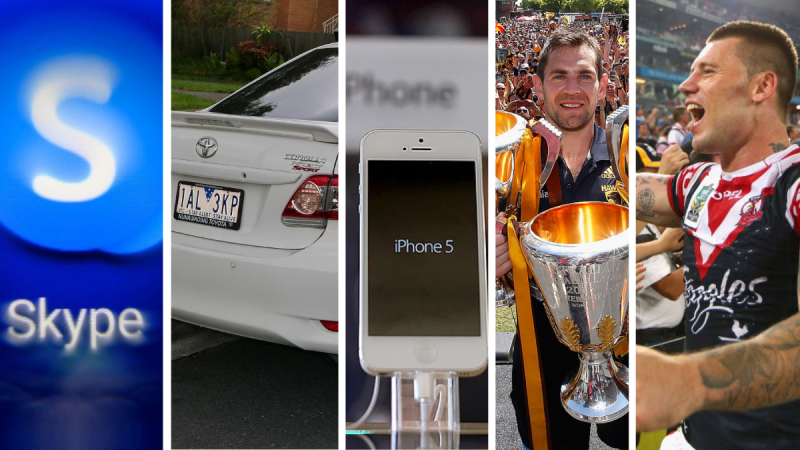The Stats Guy: Predictions are never easy, especially about the future

Source: Simon Kuestenmacher
To celebrate the 10-year anniversary of The New Daily we will, over the next week, look deep into the demographic crystal ball to understand how the Australia of 2033 will be different from today, when TND will be 20.
While there will undoubtably be important changes that affect all of us, when thinking about the future it is tempting to overestimate the rate of change.
- Click here to read The Stats Guy’s special report into what Australia’s next decade will look like
I’m sure you’ve seen plenty of YouTube videos declaring that this or that new app, geopolitical trend, or fiscal policy “changes everything”. When looking 10 years into the future, I like to begin by looking 10 years into the past.
This sets a nice benchmark for the rate of change.
Even if you think the rate of change is now faster than ever, you will want to start your analysis of the future with a solid look into the rearview mirror.

Some signs of what life was like way back in 2013. Photo: TND/Getty
A decade ago, in 2013, you had an iPhone 5 and used it to post on Facebook, Instagram, and Twitter. You used GoogleMaps to navigate across unfamiliar cities in your car.
If you purchased a new car in 2013 it was most likely a Toyota Corolla, Mazda 3, or Toyota Hilux. Your job was very much done on a computer, and you had the technology available to Skype.
You read a piece in The New Daily on your computer while you were meant to do some work. In your spare time you watched YouTube and TV.
Hawthorn won the AFL grand final in 2013, while the Sydney Roosters won the NRL.

These are some signs of how life has changed in recent years. Photo: TND/Getty
In 2023 you have an iPhone 14 or even 15 and use it to post on Facebook, Instagram, and on a re-branded Twitter. GoogleMaps guides you and your Toyota Hilux, Ford Ranger or MG ZS through unfamiliar cities.
Your job is done on a computer and your use of video calls has expanded to new apps (Zoom, Google Meet or Teams) and is a mainstay of your work day. You still read The New Daily (I know this for a fact). You still waste time on YouTube, but now the likes of Netflix, Paramount+ and Stan have joined the competition for your spare time.
Hawthorn came nowhere near the grand final in 2023, while the Roosters didn’t do much better.
The changes over a decade may seem imperceptible to many of us, but they do have a profound affect on the Australia we’ll grow old in and the coming generations will inherit.
Different cars, same journeys
Am I guilty of cherry-picking here? Absolutely and that’s the point I try to make. It’s easy to look at one thing that changed over the last ten years and then claim that “everything changed”.
Our car-buying habits changed and we now drive bigger cars. Goodbye sedans, hello SUVs. That’s a big shift warranting analysis, but we still use cars in the exact same way.
Our cities are just as car dependent as they were a decade ago, but the driving experience hasn’t changed much. It’s not like you never got stuck in traffic in 2013.
The human experience is unchanged.
You suffer, you love, you fear, you laugh. You exchange your time for a salary and look forward to the weekend. You follow the same sports team. Your voting habits likely haven’t changed either.
We still form families, struggle through hard times in our relationships, worry about things that are outside of our control, and remain somewhat optimistic just to keep going. Endless social, cultural, and demographic shifts occur all the time – after all, that’s what this column explores week after week – but the core facts of life stay untouched.
Different, sort of
You can repeat the exercise of the above paragraphs by looking at what life looked like in 2003, 1993, or 1983. Obviously, the deeper you venture into the past, the more change you can locate.
It’s easy and fun to write a social change piece this way. Looking at what stayed the same reminds us of the constants of life in Australia. Go back to 1903 and you find that we voted in free elections. You get the idea; some things were, in essence, the same 120 years ago.
Logic dictates that the future, even with lots of economic and technological change coming our way, will look much more like the present than we might think.
Even though we might feel tempted to talk about these “unprecedented times” we are living in, there were plenty of periods where the world was changing faster and more intensely. The introduction of electricity was much more impactful than the iPhone. War is facilitating change much more intensely than the COVID-19 pandemic.
There is even an argument to be made that the rate of change will slow in the coming decades, rather than speed up. Two main drivers are at play here: a global economic slowdown, and Baby Boomer money wanting to be as boring as possible.
Many economists predict a general economic slowdown in the coming years. All the bad financial news out of China suggests that, at worst, we might see a 2008-style global financial crisis based on a broken housing market in a major global economy. At best we see lower than expected consumption by the huge Chinese consumer market.
Not good news for Australia as about 40 per cent of our exports go to China alone.
On top of this, Baby Boomers control the biggest share of global wealth.
Baby Boomer bucks
As Baby Boomers age, their financial advisors (or super funds) will push money away from innovative but risky investments towards secure and boring investments. Less money will be available for high-risk/high-reward stuff like Google, as it was back in the day, as capital flows towards boring stuff like bonds and real-estate.
This means the rate of progress would slow down. You could of course also argue the exact opposite by betting on AI (artificial intelligence) becoming so efficient that we can finally lift labour productivity to new heights.
Please don’t mistake the argument that change isn’t occurring as fast as we might think with the fact that change is occurring. Looking into the future is still a crucial exercise for any level of government, any business, and any single one of us – after all our personal decisions very much depend on what we expect the future might look like.
Demographer Simon Kuestenmacher is a co-founder of The Demographics Group. His columns, media commentary and public speaking focus on current socio-demographic trends and how these impact Australia. His latest book aims to awaken the love of maps and data in young readers. Follow Simon on Twitter (X), Facebook, LinkedIn for daily data insights in short format.









